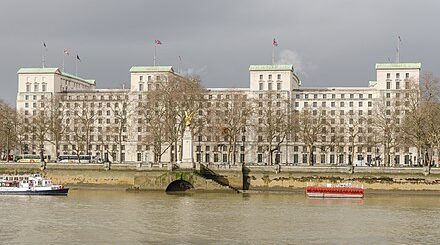FAA Pressed To Allow Drone Flights in non Segregated Air Space
Unmanned aircraft have proved their usefulness and reliability in the war zones of Afghanistan and Iraq. Now the pressure’s on to allow them in the skies over the United States.
The Federal Aviation Administration has been asked to issue flying rights for a range of pilotless planes to carry out civilian and law-enforcement functions but has been hesitant to act. Officials are worried that they might plow into airliners, cargo planes and corporate jets that zoom around at high altitudes, or helicopters and hot air balloons that fly as low as a few hundred feet off the ground.
On top of that, these pilotless aircraft come in a variety of sizes. Some are as big as a small airliner, others the size of a backpack. The tiniest are small enough to fly through a house window.
The obvious risks have not deterred the civilian demand for pilotless planes. Tornado researchers want to send them into storms to gather data. Energy companies want to use them to monitor pipelines. State police hope to send them up to capture images of speeding cars’ license plates. Local police envision using them to track fleeing suspects.
Like many robots, the planes have advantages over humans for jobs that are dirty, dangerous or dull. And the planes often cost less than piloted aircraft and can stay aloft far longer.
“There is a tremendous pressure and need to fly unmanned aircraft in (civilian) airspace,” Hank Krakowski, FAA’s head of air traffic operations, told European aviation officials recently. “We are having constant conversations and discussions, particularly with the Department of Defense and the Department of Homeland Security, to figure out how we can do this safely with all these different sizes of vehicles.”
There are two types of unmanned planes: Drones, which are automated planes programmed to fly a particular mission, and aircraft that are remotely controlled by someone on the ground, sometimes from thousands of miles away.
Last year, the FAA promised defense officials it would have a plan this year. The agency, which has worked on this issue since 2006, has reams of safety regulations that govern every aspect of civilian aviation but is just beginning to write regulations for unmanned aircraft.
“I think industry and some of the operators are frustrated that we’re not moving fast enough, but safety is first,” Krakowski said in an interview. “This isn’t Afghanistan. This isn’t Iraq. This is a part of the world that has a lot of light airplanes flying around, a lot of business jets.”
As the FAA weighs the barrage of requests, America’s heavy reliance on drones in Afghanistan and Pakistan has come under increasing fire from the international community, with a United Nations official issuing a report arguing that drone strikes amount to a “license to kill” without any accountability – a license the U.S. would not want any other country to have.
As CBS News national security correspondent David Martin reported, an operation the U.S. government doesn’t even admit exists has killed more than 500 people.
One major concern for the FAA on the homefront is the prospect of lost communication between unmanned aircraft and the operators who remotely control them. Another is a lack of firm separation of aircraft at lower altitudes, away from major cities and airports. Planes entering these areas are not required to have collision warning systems or even transponders. Simply being able to see another plane and take action is the chief means of preventing accidents.
The Predator B, already in use for border patrol, can fly for 20 hours without refueling, compared with a helicopter’s average flight time of just over two hours. Homeland Security wants to expand their use along the borders of Mexico and Canada, and along coastlines for spotting smugglers of drugs and illegal aliens. The Coast Guard wants to use them for search and rescue.
The National Transportation Safety Board held a forum in 2008 on safety concerns associated with pilotless aircraft after a Predator crashed in Arizona. The board concluded the ground operator remotely controlling the plane had inadvertently cut off the plane’s fuel.
Texas officials, including Gov. Rick Perry, Sens. Kay Bailey Hutchison and John Cornyn, and Rep. Henry Cuellar, have been leaning on the FAA to approve requests to use unmanned aircraft along the Texas-Mexico border.
Homeland Security Secretary Janet Napolitano has told lawmakers that safety concerns are behind the delays. Cornyn is blocking a Senate confirmation vote on President Obama’s nominee for the No. 2 FAA job, Michael Huerta, to keep the pressure on.
Other lawmakers want an overall plan to speed up use of the planes beyond the border. A bill approved by the Senate gives FAA a year to come up with a plan; a House version extends the deadline until Sept. 30, 2013, but directs the transportation secretary to give unmanned aircraft permission to fly before the plan is complete, if that can be done safely.
Marion Blakey, a former FAA administrator and president of the Aerospace Industries Association, whose members include unmanned aircraft developers, said the agency has been granting approvals on a case by case basis but the pace is picking up.
Some concerns will be alleviated when the FAA moves from a radar-based air traffic control system to one based on GPS technology. Then, every aircraft will be able to advise controllers and other aircraft of their location continually. However, that’s a decade off.
http://cbs4.com/national/faa.drones.us.2.1750110.html
(© 2010 CBS Broadcasting Inc. All Rights Reserved.)


